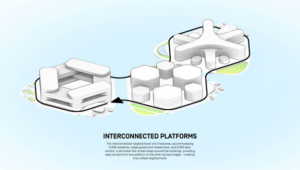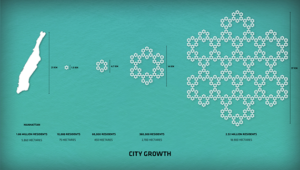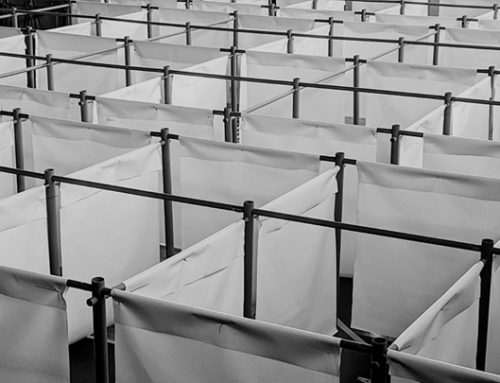“We cannot solve today’s problems with yesterday’s tools. We need to innovate solutions to global challenges. But in this drive for innovation, let’s be inclusive and equitable and ensure we leave no one and no place behind,” Executive Director of UN-Habitat, Maimunah Mohd Sharif said at the launch. (1)
Oceanix Busan is a recently unveiled design for a sustainable floating neighborhood just off the coast of South Korea’s largest port city. In order to foster a self-sustaining human habitat capable of coping with any rise in sea level, the modular project will use a variety of sustainable materials and methods.
A few of the key features of the design are discussed as follows:
- Three interconnected platforms
The floating city is made up of three interconnected platforms totaling 15.5 acres that will house a community of 12,000 people at first, with the potential to grow to 100,000 people, with construction set to begin in 2023.
Each platform serves a specific purpose – living, research, and lodging – and the link-span bridges that connect them to the land create a sheltered lagoon with space for water recreation. (1)
Oceanix Busan’s initial design calls for three interconnected platforms, each with its own function, that are connected to land via bridges. There’s a Lodging Platform with sweeping harbor views, as well as shopping, dining, and other communal areas. A Research Platform includes a temperature-controlled garden area with hydroponic towers for growing the food for the floating city. Finally, the Living Platform is where permanent residents live and congregate. (1)

- Future expansion in design
The initial Oceanix plan calls for a 15.5-acre platform with a capacity of 12,000 people. However, just as it’s built to rise with the tides, its rather modular footprint can expand to accommodate 100,000 people across 20 platforms. (2)

- Biorock: key construction component
Biorock is a key component of the Oceanix Busan platforms, which will be anchored to the seabed. Biorock absorbs minerals from seawater to naturally form a limestone coating that is not only multiple times stronger than traditional concrete, but also self-sustaining and self-repairing over time.
It is frequently used to help repair coral reef damage and reinvigorate aquatic ecosystems. When you consider that Biorock actually absorbs some carbon dioxide, it’s easy to see why this environmentally friendly material is so important to the project. (2)
- Sustainability and circularity
Another important aspect of the design is its long-term viability. To ensure that the floating city reuses and wastes as little as possible, the OCEANIX Busan has six integrated systems focusing on energy, food, water, waste, mobility, and coastal habitat regeneration.
Oceanix Busan was designed to ensure that nothing is wasted. The project will use closed-loop systems to (re)harvest, filter, and reuse water. Other waste will be repurposed as agricultural feedstock and energy sources that are environmentally friendly. On-site solar and wind power will provide self-sufficiency in terms of electricity, though the platforms will be connected to the local power grid as a backup. (3)

- Redefined mobility through design
Although residents will have access to an on-land subway station due to their connection to solid ground, traditional cars and trains will not be used to navigate the platforms. Oceanix promises “shared and multimodal mobility” in addition to walking and biking, which could include something akin to aquatic buses, if renderings on the project’s website are any indication. (3)

REFERENCES:
- https://www.architecturaldigest.com/story/surprising-facts-worlds-first-floating-city#intcid=_architectural-digest-bottom-recirc_982743f5-3585-4167-9fb6-7ab631bfa81d_text2vec1
- https://oceanixcity.com/busan/
- https://unhabitat.org/un-habitat-and-partners-unveil-oceanix-busan-the-worlds-first-prototype-floating-city




